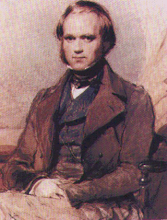
In 1909 Earl Douglass, a vertebrate paleontologist from the Carnegie Museum of Pittsburgh, Pennsylvania, mounted an expedition to northeastern Utah to prospect for dinosaurs for his Museum.
Douglass chose his prospecting site carefully, knowing that dinosaurs were likely to be found in the preserved sediments of ancient river systems. The expedition was a resounding success, and in 1915 President Woodrow Wilson proclaimed the Douglass quarry Dinosaur National Monument.
The Monument preserves the remains of more than 1500 fossil bones in place in the sandstone in which they were preserved. Thanks to tectonics, the originally flat-lying sedimentary rock layers were tilted upwards so that the fossil bone bed forms a wall of the visitor’s center, a kind of paleontological bas relief.
More information from the National Parks Service here.


No comments:
Post a Comment